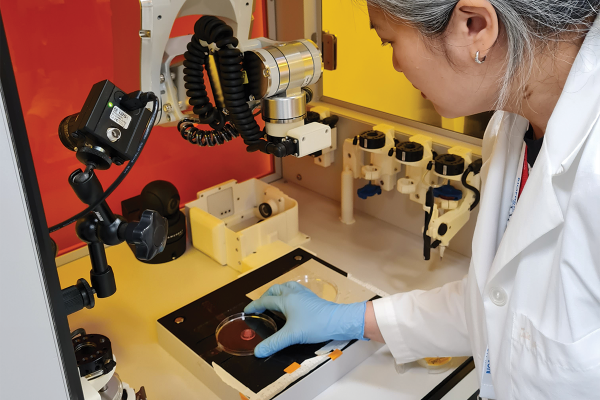Research Associate Professor Jaydee Cabral is an Otago researcher and lecturer who is taking 3D printing to a whole new level. Her lab is going to be printing nipples. Yes: printing nipples with a 3D printer.
Of all things to 3D print, why nipples? Jaydee has a good reason. She is going to be working on making customizable nipple implants for breast cancer patients. The printed nipples are being designed for those who’ve had mastectomies and are getting breast reconstruction.
“There is nothing clinically available for mastectomy patients in terms of nipple reconstruction,” says Jaydee. There is only one option (it’s called ‘skin flap suturing’) and it “only creates a semblance of a nipple.” It is not a great option. “There are high rates of infection, multidirectional scarring, and it is often repeated multiple times,” says Jaydee.
3D bioprinting customised nipples is a huge step forwards in providing a safe and reliable option for these patients. Bioprinting is the same as 3D printing but, rather than plastic, the ‘ink’ is a mixture of biomaterials (biologically compatible materials) and living cells. The idea behind 3D bioprinting is that the printed construct is not just an implant, it is a piece of living tissue infused with the patient’s own cells which allows it to be accepted into and become part of the body.
Jaydee’s work is a project that goes beyond Aotearoa; she has just received a grant worth $80k to collaborate with the University of Maryland’s (USA) Professor John Fisher who has been leading research surrounding the design and printing of the 3D printed nipples so far. The Fisher lab has developed the process of printing these nipples and customising them. They scan the nipple and get the digital blueprint for the printing from that scan, meaning they can make a replica of the patient’s original nipple.
“To link the South Island, New Zealand, with an international leader in bioengineering and access to the latest in cutting-edge next generation healthcare technologies is incredibly exciting,” Jaydee says. Her main focus will be incorporating blood vessels into the 3D printed nipples so they can survive in the body, a process called ‘vascularisation’.
The vascularisation process is key, as the remaining hurdle for this project is to keep the cells in the printed nipple alive. In a natural nipple, there are thousands of tiny blood vessels providing the cells with the nutrients and oxygen they need to survive. But in 3D bioprinted nipples, this is pretty hard to do. This is where Jaydee comes in, as vascularising 3D bioprinted tissue is her area of expertise.
It is an incredible project which Jaydee could hardly contain her enthusiasm for, especially the opportunity to play with the BioAssemblyBot, a robot that bioprints, transports, and completes experiments on living tissues.
Jaydee is currently looking for a Masters student to join her in developing these vascularised nipples: “Any student with a STEM background would suit!” The lucky student would be trained up and get the chance to travel to the University of Maryland to do some work in the Centre of Complex Tissues, the home of the BioAssemblyBot. Jaydee promised that “if you enter this dynamic field, you will never be bored!” It also helps that there is a high demand for bioengineers. Free the 3D-bioprinted nip!
If this sounds like a bit of you, get in touch with Jaydee at jaydee.cabral@otago.ac.nz. You can also learn more about Jaydee’s research here:




